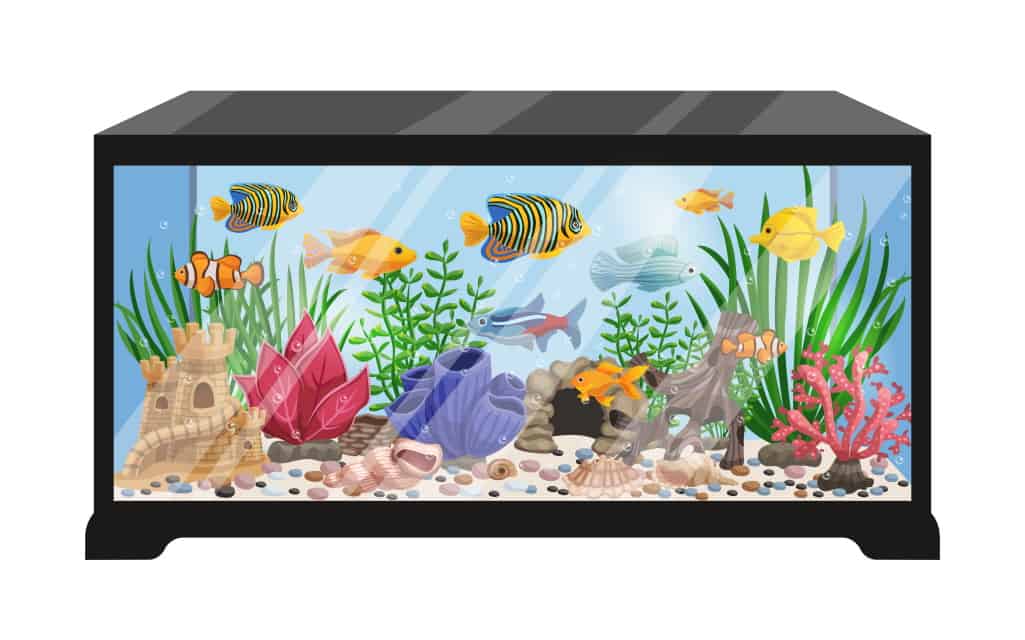For beginners of aquarium building, choosing from saltwater and freshwater fish can be quite a challenging experience. Scientific studies have concluded that building and maintaining aquariums as a hobby has positive health effects like reducing stress. The vibrant ambiance that the aquarium contributes to home brings forth a relaxation and entertainment source to most of its viewers.
Main Differences between Saltwater Fish and Freshwater Fish
Let us primarily tackle the difference between water compositions: Saltwater refers to all water bodies found in oceans, bays, and seas. Freshwater consists of all water bodies located in lakes, ponds, rivers, and streams, some of which have a directional flow of water current. Natural freshwater sources contribute three percent of the earth’s overall water supply, but most freshwater fish amounts to almost half of fish species inhabiting our planet.
The natural biological design of fish enables most species to adapt and compensate for any conditions of the environment they inhabit. Suppose you want a healthy diet for your artificial saltwater container; feeding your marine pets hang on back (HOB) protein skimmers can readily be accepted by the saltwater fish species suitable for their biological functions. Both types, whether saltwater or freshwater fish, require salt to survive and prolong their lifespans.
The saltwater variant can exemplify the adaptation methods of most fish species. Saltwater fishes feature a body that contains smaller amounts of salt than the water composition found in their living areas. To prevent the onset of dehydration, saltwater fishes intakes large volumes of water while secreting excessive salt through their gills. They also produce less urine to have the capacity to store pure water filtered through their process of eliminating salt.
Freshwater fishes are known to adapt to different conditions of their habitats. The bodies of water they live in are prone to be dried out or induced with enormous water forces, which changes the nutrient composition of the water. Freshwater fishes then evolved to store more salt within their systems, for there is not much salt supply within their environment. Freshwater fish simultaneously absorbs water and salt through their skin and gills to survive the volatile conditions. It also makes freshwater fish produce more urine than their saltwater counterpart.
Are Saltwater Fish Harder to Care for than Freshwater Fish?
Several aquarists and marine hobbyists agree that saltwater fish provide more vibrant, colorful, and attractive colors that intrigue them. Saltwater fish are also challenging to sustain and require more resources to set-up with a fish tank. Marine hobbyists should have learned the capability to mix artificial sea salt and purified tap water properly. Salt mixes are added until the preferable salinity and specific gravity is achieved, suitable for Saltwater fishes’ lives.
● Cost
Purchasing saltwater fishes can be quite expensive than their saltwater counterparts. Many owners also find them harder to feed due to the exquisite requirements of their natural habitat. Saltwater fish tanks also require different types of advanced equipment for the proper balancing and preservation of marine creatures. Saltwater fish tanks often require specialized elements such as protein skimmers, live rocks, corals, and reefs to simulate a saltwater environment successfully.
● Container Dimensions
There is a common misconception that saltwater fish tanks should be filled with water volumes less than 50 gallons. But the rising popularity of nano reef tanks opposes this myth. There is now a minimum of ten to a maximum work of thirty-gallon nano reef tanks produced by many aquarium industry manufacturers. It is always recommended to use a larger fish tank for it is easier to maintain due to its vast amounts of water volume. Saltwater fish containers also require a delicate balancing of water composition, salinity, ph levels, and salt levels.
● Water Changes
Saltwater fish tanks often require periodic changes in their water volume due to the effort and proper mixing of artificial salt and tap water preferred to be purified. Water changes can consume long durations of time as they require unique devices like hydrometers to check the salinity level of the water to be installed. The artificial salt mixture should be added with filtered tap water until the desired level of salinity, and specific gravity is achieved.
Conclusion
Saltwater fishes are known to be harder to maintain and feed and do require the expenditure of resources. The fish tank that contains saltwater fish species requires specialized equipment for the proper balancing of its artificial environment. Saltwater fish tanks should properly mimic the natural environment found within the earth’s oceans. The mixing of the water composition is measured by salinity levels and specific gravity suitable for saltwater fish species.



